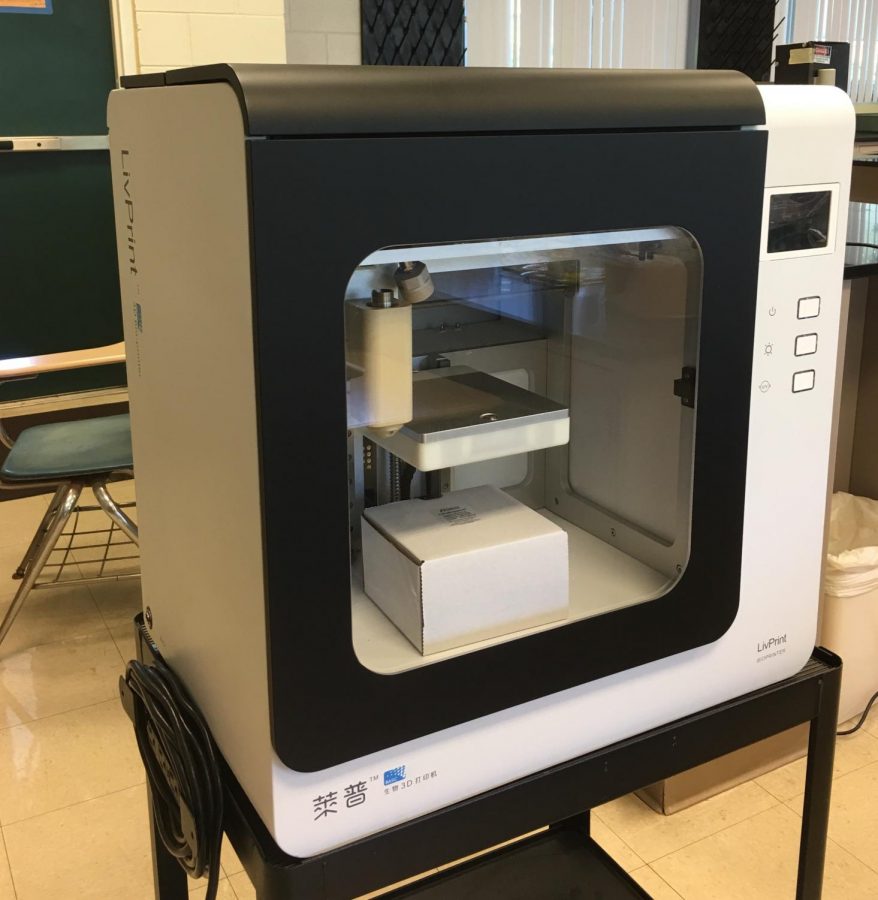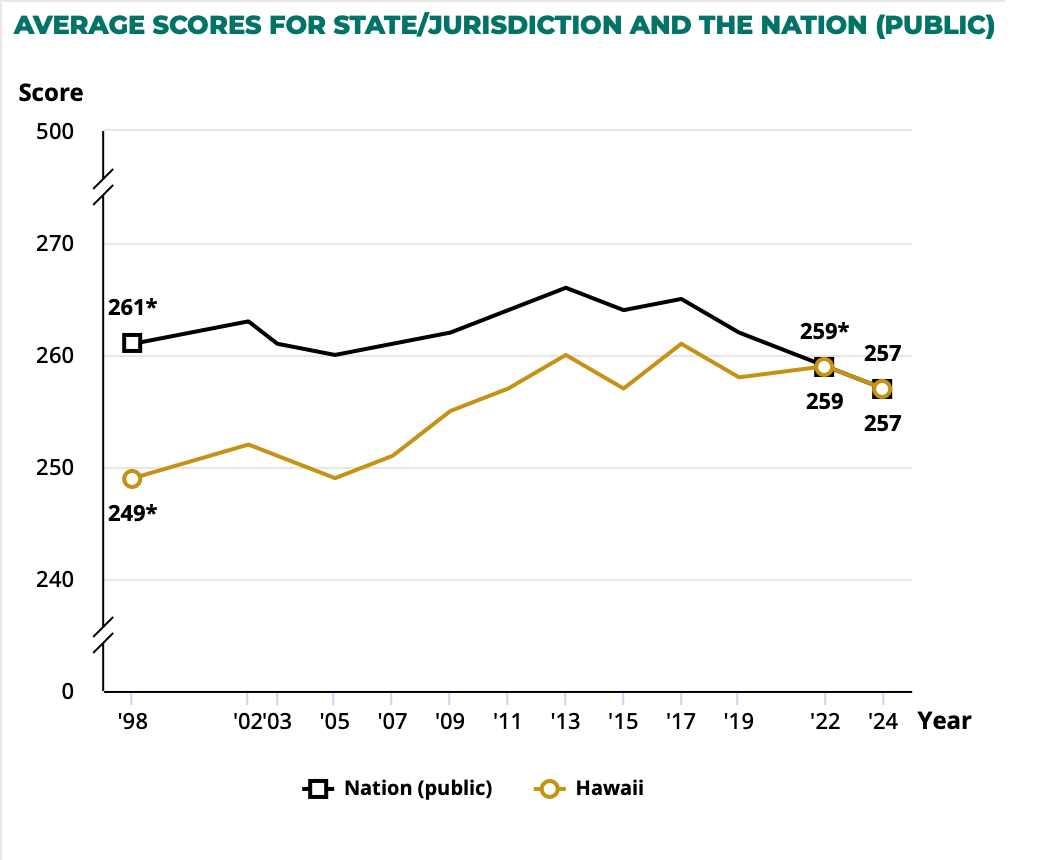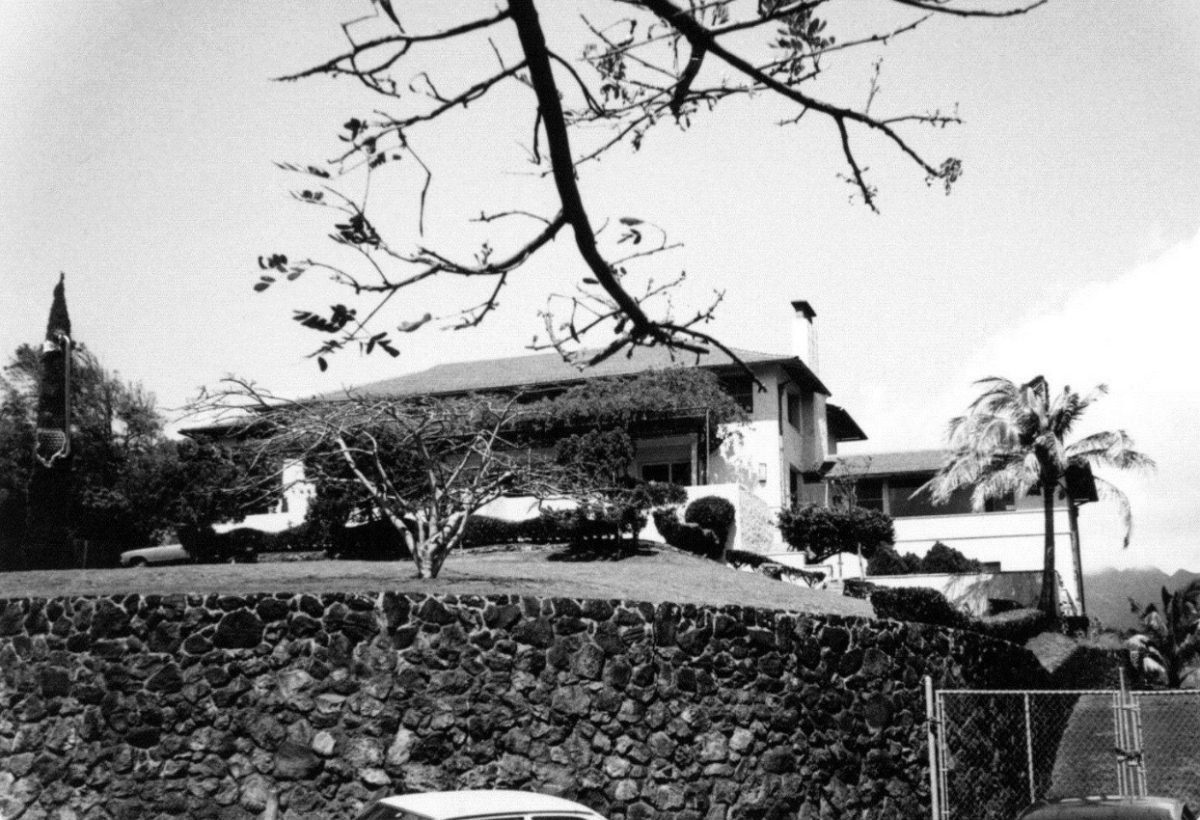New printer constructs living cells
New bio 3D printer at Hartley Complex.
May 17, 2019
A new printer that can create living cells has arrived at the Hartley Complex.
The printer, called a biological 3D printer, will be available for student use starting as early as 2020, said Dr. Mindy McDermott, science department chair.
The donated printer arrived on campus in mid-December, and it is likely the only printer of its kind on Oahu, according to the science department.
A new committee will discuss the ethics behind using living cells and guide decision making, said High School Principal Paul Passamonte.
“We thought about setting up a bioethics committee to address some of the questions with regard to, are we using live cells or are we not using live cells,” said Passamonte.
At first, faculty will use non-living materials. The committee will talk about the options for classroom use and guide next steps, said Passamonte.
“If we are going to use live cells within this bio printer, what are the ethical conversations we need to have around it?” said Passamonte.
The printer allows the creation of biomedical parts using biomaterials and bio-ink. According to an article in National Geographic, bio printers must lay down a scaffold covered in the patient’s own skin and cartilage cells. Over a period of 6 months, the hydrogel on the scaffold disintegrates and the cells grow and fills into an ear-shaped form. The ear is made up of all human cells.
Bio 3D printers could cost as much as $20,000, although school officials said they did not know the exact cost of the one at Mid-Pacific.
The printer donation was arranged by Mid-Pacific parent KunKun Duan.
Currently the printer is in the science preparation room in Hartley. For high schools to have access to bio 3D printing is rare, said Director of Education Technology Brian Grantham.
“There are colleges and universities that don’t have access to this type of technology,” said Grantham.
As recently as 2013, bio printers were still in the experimental stage. But the technology has rapidly advanced, according to a recent article on CNN.
Mid-Pacific will do testing using a variety of live materials. From working with plants and algae, to printing tissues and organs.
“We’re going to be using cells. You could be using skin cells, epithelial cells, really any sort of cell type,” said AP Environmental Science teacher Mindy McDermott.
Teachers and technology staff are working on understanding the technology and getting the printer to work.
“The printer will be incorporated into existing science classes until a class can be proposed and created,” said Grantham.
A biotechniques elective course will work directly with the printer to help better prepare students for medical research and the course will be available in the fall of year 2021, said McDermott.
“Likely it would be an elective course like a semester long course to hopefully better prepare people for medical research or pre med to get a better handle on human biology,” said McDermott.
Students could connect with professionals through their use of the bio 3D printer.
“Another benefit for our students is to connect with university doctors/professors or doctors and researches in their respective field who can help guide our students in the use of biotechnology, 3D printer, cell creation and drug testing,” said Grantham.
Incorporating this printer into Mid-Pacific’s education system will allow students to push further in their prospective field.
“[The] ability to do the same kind of research, thinking and projects that is happening in the field currently, only allows our students to push the process further if they choose to go into any of the related fields,” said Grantham.
“This is exciting and for our students to have access to this cutting edge technology and how it could … help save lives,” said Grantham.







